DETERRENCE: The Navy is preparing to launch swarm bots out of cannons
DPRK: North Korea seeking foreign investors after deal with Chinese company
GOVERNANCE AND CIVIL SOCIETY: Abe to include ‘apology’ in war anniversary statement
CLIMATE CHANGE ADAPTATION: Tackling climate change and promoting sustainable development
CLIMATE CHANGE AND SECURITY: It’s not climate change — it’s everything change
Archives
The militarisation of Pine Gap: Organisations and Personnel
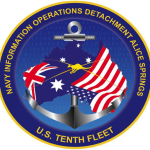
Many Australians associate Pine Gap with the Central Intelligence Agency, and it probably remains the CIA’s most important technical intelligence collection station in the world. Yet Pine Gap is much more thoroughly militarised than in the past, with units of all four branches of the US armed forces now present, with close involvement in operations of the US military worldwide, including in Iraq and Afghanistan. The US military personnel now comprise about 66 per cent of the US Government employees (not counting contractor personnel) at Pine Gap. US military Service elements form a Combined Support Group (CSG). Through the 1990s, the growing Service presence supported Pine Gap’s primary (and during that period its sole) role, that of controlling and processing and analysing SIGINT collected by the NRO/CIA geosynchronous SIGINT satellites. Since then, the larger proportion of the CSG personnel have evidently been engaged in FORNSAT/COMSAT (Foreign Satellite/Communications Satellite) collection. Officially, they are engaged in Information Operations, Cyber Warfare and the achievement of Information Dominance. In practice, this involves monitoring Internet activities being transmitted via communications satellites, scouring e-mails, Web-sites and Chat Rooms for intelligence to support military operations, and particularly those involving Special Operations Forces, in Iraq and Afghanistan. They are undoubtedly key participants in NSA’s X-Keyscore program at Pine Gap.
Crossing Borders: a feminist history of Women Cross DMZ
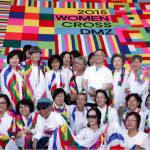
Suzy Kim writes, “On May 24, 2015, thirty women peacemakers from fifteen nations walked with Korean women of the North and South to call for an end to the Korean War and the peaceful reunification of Korea on the seventieth anniversary of its division.
“In this essay, I begin by exposing the subtle forms of sexism embedded in the critical reaction to our Peace Walk while debunking the specific arguments made against Women Cross DMZ and the women of both Koreas who supported and co-organized the walk. Then, I situate the Peace Walk within the broader history of the global women’s peace movement, and finally go on to share some of my experiences behind-the-scenes of both organizing and participating in the Peace Walk that illustrate a feminist history of Women Cross DMZ.”
Nautilus Peace and Security Network – 6 August 2015
DETERRENCE: The massive OPM hack actually hit 21 million people DPRK: NK diplomat steals spotlight in regional forum GOVERNANCE AND CIVIL SOCIETY: Youth unemployment rate in Korea reaches highest in 15 years AUSTRAL PEACE AND SECURITY: ANZUS, China and the prisoner’s dilemma DETERRENCE: The massive OPM hack actually hit 21 million people, Kim Zetter, Wired (9 July 2015) The […]
Japan’s Signals Intelligence (SIGINT) Ground Stations: A Visual Guide
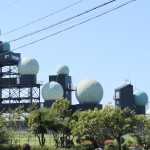
This is a study of Japan’s ground-based signals intelligence (SIGINT) stations, the 17 (soon to be 19) major f…
An Updated Estimate of Energy Use in the Armed Forces of the Democratic People’s Republic of Korea (DPRK)
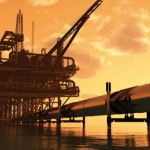
North Korea’s new leader inherited a large standing conventional military. Shortly after taking over, he succeeded in launching a rocket and testing a nuclear device. His actions were likely primarily driven by domestic concerns. North Korea’s governance system seems to seek strong domestic support in part by being able to demonstrate a set of strong external forces allied against the nation, which helps to make acceptable the consolidation of decision power under one charismatic leader and justifies diverting a larger portion of the populace away from the civilian sector of the economy and into the military than is the case in any other country. This large standing conventional force demands a surprisingly modest proportion of North Korea’s overall energy usage (though a much larger fraction of the DPRK’s limited petroleum fuels supplies) indicating a large, but not particularly active military. Despite increased tensions in recent years, it is not clear that North Korea’s military has actually increased its overall energy demand. North Korean military energy usage seems more or less static over the years and is consistent with observations that North Korean rhetoric regarding potential military actions has increased, but that the actual actions of the DPRK’s conventional military remain muted.
Nautilus Peace and Security Network – 30 July 2015
DETERRENCE: Crews to start unprecedented 3-carrier swap this summer DPRK: US envoy on North Korea Sydney Seiler says Iran deal proves flexibility GOVERNANCE AND CIVIL SOCIETY: Students protest in Taiwan over ‘China-centric’ education CLIMATE CHANGE AND AND SECURITY: Beijing is finally getting serious about climate change DETERRENCE: Crews to start unprecedented 3-carrier swap this summer, Lance Bacon, Navy Times (12 July […]
Energy Security and the Role of Green Economies in East Asia
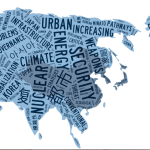
by David von Hippel Contributing authors: Yi Wang, Kae Takase, Tetsunari Iida, Myungrae Cho, and Sun-Jin Yun 28 July 2015 I. Introduction David von Hippel writes that following the Fukushima nuclear disaster, there is an increasing ‘recognition that new paradigms are needed to deal with expanding complexity in the relationships between the issues and actors […]
Nautilus Peace and Security Network – 23 July 2015
DETERRENCE: Effort to overhaul nuclear missile system expected to begin this fall DPRK: Why do North Koreans even vote? GOVERNANCE AND CIVIL SOCIETY: Debate over security bills masks clash of views on pacifist constitution CLIMATE CHANGE ADAPTATION: The Antalya report: Disaster risk reduction in a changing climate AUSTRAL PEACE AND SECURITY: Australia and Indonesia: time for a rethink? DETERRENCE: Effort […]
POTENTIAL POINTS OF ENTRY
Potential Points of Entry The following links are a list of “Potential Points of Entry” for the insertion of sustainable and ethical investment rules. These points of entry are institutions and mechanisms at the global, national, and subnational level. These include the fora in which investor rights are negotiated and arbitrated, such as the WTO […]

